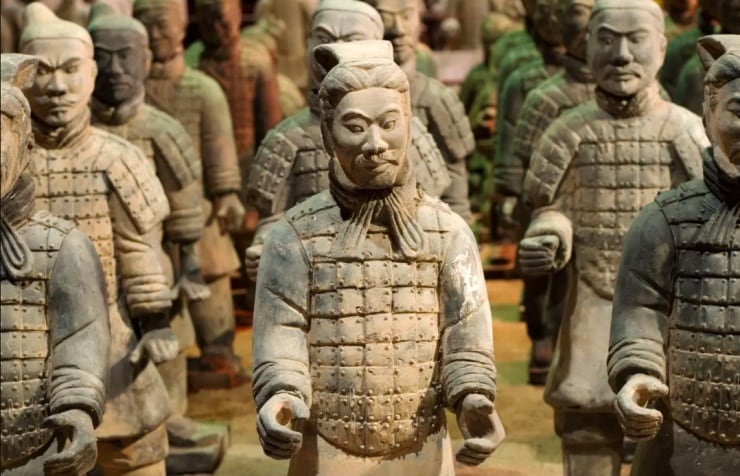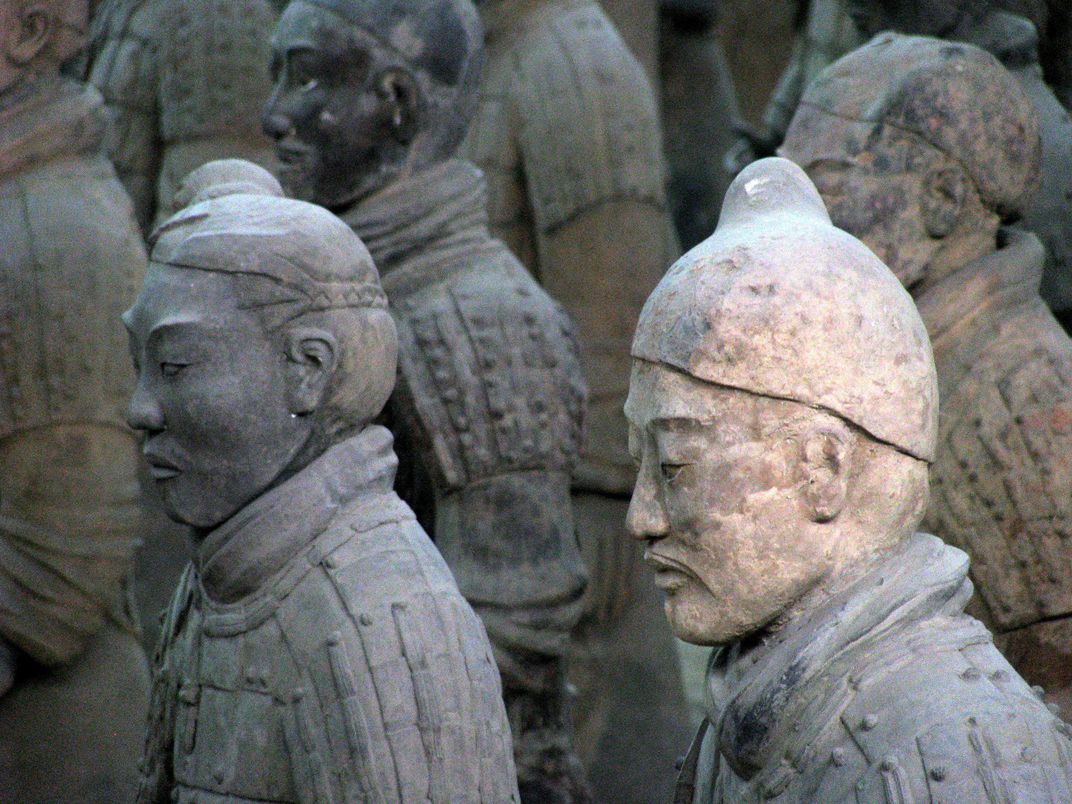Viky to je síla 
More Terracotta Army soldiers found
Categories: Finds and rescue research abroad , Nálezy nejenom s detektorem v Číně
The Terracotta Army is one of the largest mausoleums in the world and is constantly growing. More than 200 more warriors have been newly discovered by Chinese archaeologists. They were at the tomb of Qin Shi Huang Ti, who was the first emperor of unified China.
The emperor's tomb is located in the city of Xi'an in Shanxi province. Archaeologists have been surveying the area since 1999 and have explored hundreds of square meters. Archaeologists estimate that there may be as many as seven thousand warriors of the famous Amada near the tomb, but so far they have found only two thousand. The newly mentioned more than two hundred.
In addition, the archaeological team also discovered a large number of weapons at the same site. Among them were bronze bows and swords and coloured shields.
The archaeologists made their new discoveries in the largest chamber of the four they found. It's 62 metres wide and 230 metres long. The fourth and final chamber was completely empty. The individual warriors were arranged very well in the chamber. They were probably higher ranking members of the army. "They have distinctive features and hairstyles. Everyone is different, we didn't find two warriors the same," noted archaeologist Shen Maosheng.
The archaeologists also discovered a pit that was apparently intended for the horses whose fossils they found there. But also for a carriage, because the researchers found matching footprints. The new discoveries include twelve clay horses and the tracks of two chariots.
The Terracotta Army was created by Emperor Qin Shi Huang when he came to power at the age of thirteen. He conquered the warring states that surrounded him and created the first unified Chinese empire. He took a series of measures to centralise administration and strengthen infrastructure. In addition to standardizing weights, measures and written language, the young ruler built a series of fortifications that later became the foundation of the Great Wall. In addition, he had networks of roads and canals built.
According to the Encyclopaedia Britannica, Qin Shi Huang was interested in immortality. He hoped to find alchemists who could create the elixir of life. Although this effort proved futile, the emperor continued to seek to "continue" his rule after his death. That is why he built a huge mausoleum and an army of Terracotta to protect the ruler after his death. The monstrous structure commanded the respect of the people who dared not enter. They feared the potential pitfalls. Archaeologists say up to 700,000 workers worked on the mausoleum over three decades. When the emperor died, it was not yet finished.



Source: www.smithsonianmag.com, www.express.co.uk, www.lonelyplanet.com
The article is included in categories:
- Archive of articles > Archaeology > Finds and rescue research abroad
- Archive of articles > Archaeology > Finds and rescue research abroad > Nálezy nejenom s detektorem v Číně
Post
Já jsem zvědav kdy a zda otevřou tu hrobku.Jestli je teda stále neděsí to množství rtuťe.
Jen technická - není to Terakotova armáda, ale Terakotová - vojáci jsou z terakoty.
Pěkné a zajímavé čtení. 






